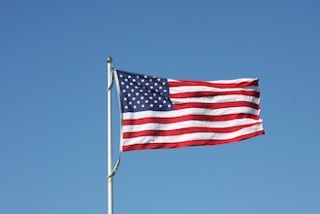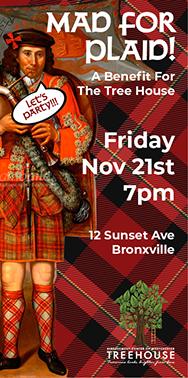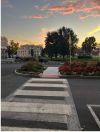The Flag Code: Proper Flag Etiquette for Memorial Day

May 25, 2011: Three official holidays involving the American flag are coming up, all within the next six weeks: Memorial Day (May 30), Flag Day (June 14), and Independence Day (July 4).
How many of you know how to properly display a flag, let alone understand all of the details of flag etiquette? The little we know is probably from Boy Scouts and Girl Scouts or a fourth-grade history class.
The flag for any country is a source of pride and inspiration for the people. It deserves a certain amount of respect. It's time, therefore, to review "flag etiquette" not only for ourselves, but for the sake of our progeny. Below is a basic list of dos and don'ts.
• The flag should not be used as clothing or as a costume.
• No flag should ever touch the ground.
• The image of the flag should not appear on boxes, paper napkins, plates, or anything made to be discarded.
• The U.S. flag should never be dipped to any person or thing.
• No flag should be allowed to be torn, soiled, or otherwise damaged in any way.
• No marks such as logos, insignias, letters, words, designs, or figures should be attached to the flag.
• The U.S. flag should never be used to carry or hold anything.
• Never use the U.S. flag for advertising.
• An upside-down flag is a distress signal.
• A country's flag, when hoisted with other flags, should always be hoisted first and taken down last.
• Multiple flags consisting of various nations should always fly at the same level during a time of peace.
One common myth about the flag is that it should be destroyed if it touches the ground. This is incorrect. Instead, just clean it as soon as possible by hand and let it dry before hanging it up for display again.
When the flag is seriously torn, or no longer a "fitting emblem to display," it should be destroyed in a dignified way, preferably by burning.
Some people like to display flags 24 hours a day, year round. Flag etiquette states that the flag, if displayed at night, should be properly illuminated and taken in during foul weather.
When to Fly the United States Flag
The American flag can be flown every day, but the government has designated certain days when flying the flag is especially important. It is recommended that the flag fly from sunrise to sunset during the following holidays:
- New Year's Day
- Inauguration Day
- Dr. Martin Luther King, Jr.'s Birthday
- Lincoln's Birthday
- Washington's Birthday
- Easter Sunday
- Mother's Day
- Armed Forces Day
- Memorial Day
- Flag Day
- Independence Day
- Labor Day
- Patriots' Day
- Constitution Day
- Columbus Day
- Navy Day
- Veteran's Day
- Thanksgiving Day
- Christmas Day
How to Properly Display the Flag
The flag is flown at half-staff only until noon on Memorial Day. Other days that the President proclaims that the flag be flown at half-staff include: May 15, Peace Officers Memorial Day; September 11, Patriot Day; and December 7, National Pearl Harbor Remembrance Day.
Multiple flags on the same pole: Proper flag etiquette says a country's flag should always be at the top. To have one country above the other would show that the lower flag is subordinate to the one on top. The same goes for a multiple line of flagpoles; each country's flag should be at the same level as the previous one.
With other flags: When the U.S. flag is displayed in a courtroom or in a hall against a wall with other staffs, the country's flag should always be on the right (the flag's right, not the viewer's right).
Half-staff: The proper way to hoist a flag to half-staff is to draw it all the way to the top of the pole and then lower it to half-staff. Only the President of the United States or governors can proclaim that flags be flown at half-staff. Flags can be flown at half-staff for important government figures, governors of states, and foreign dignitaries. A recent addition to the Flag Code allows state governors to order that public buildings fly flags at half-staff to honor fallen soldiers from that state during time of war.
Windowsills: Flagpoles affixed to a windowsill of a home or other building should have the flag with the union (blue with stars) at the peak of the pole.
Flat on the wall or in a window: If the flag is hung on a wall or displayed in a window, the union should be on the viewer's top left.
Processions: A country's flag carried in a parade or other procession should always be in the front in a line of several flags or to the right of a second flag.
On a staff in an auditorium, church, or other public hall: If a country's flag is displayed at an official gathering in a place like a public auditorium or church, the flag should be to the right of the speaker or podium.
Across a street: During the summer months and in parades across America, the flag is often used to decorate the streets. When a flag is hung vertically across a street, the union should be pointing towards the north on an east/west street or to the east on a street that runs in a north/south direction. If the flag is to hang over a sidewalk, the union should be on the street side away from the buildings.
On cars: Many drivers have taken to decorating their cars with flags without considering the guidelines of flag etiquette. A flag should be fastened to either the front right fender or window.
Hanging the flag upside down: To hang a country's flag upside down is an international distress signal. For obvious reasons, one should never do this unless it is a real emergency.
The flag and funerals: When the flag is used to drape over a casket, the union should be at the head over the left-hand side of the casket (in order to be positioned as close to the heart as possible). At no time should the flag be lowered into the grave or be allowed to touch the ground.
For further information regarding flag etiquette, please visit www.ushistory.org. This has interesting flag facts as well as the Flag Code in its entirety.
Photo by A. Warner
Government & History Directory
Bronxville is a quaint village (one square mile) located just 16 miles north of midtown Manhattan (roughly 30 minutes on the train) and has a population of approximately 6,500. It is known as a premier community with an excellent public school (K-12) and easy access to Manhattan. Bronxville offers many amenities including an attractive business district, a hospital (Lawrence Hospital), public paddle and tennis courts, fine dining at local restaurants, two private country clubs and a community library.
While the earliest settlers of Bronxville date back to the first half of the 18th century, the history of the modern suburb of Bronxville began in 1890 when William Van Duzer Lawrence purchased a farm and commissioned the architect, William A. Bates, to design a planned community of houses for well-known artists and professionals that became a thriving art colony. This community, now called Lawrence Park, is listed on the National register of Historic Places and many of the homes still have artists’ studios. A neighborhood association within Lawrence Park called “The Hilltop Association” keeps this heritage alive with art shows and other events for neighbors.
Bronxville offers many charming neighborhoods as well as a variety of living options for residents including single family homes, town houses, cooperatives and condominiums. One of the chief benefits of living in “the village” is that your children can attend the Bronxville School.
The Bronxville postal zone (10708, known as “Bronxville PO”) includes the village of Bronxville as well as the Chester Heights section of Eastchester, parts of Tuckahoe and the Lawrence Park West, Cedar Knolls, Armour Villa and Longvale sections of Yonkers. Many of these areas have their own distinct character. For instance, the Armour Villa section has many historic homes and even has its own newsletter called “The Villa Voice” which reports on neighborhood news.
Link to Village of Bronxville One Square Mile Monthly Newsletter
Village of Bronxville Administrative Offices
337-6500
Open 9:00am - 4pm excluding holidays and weekends
Bronxville Police Department
337-0500
Open 24 hours
Bronxville Parking Violations
337-2024
Open 9:00am - 4pm excluding holidays and weekends
Bronxville Fire Deparment
793-6400

















